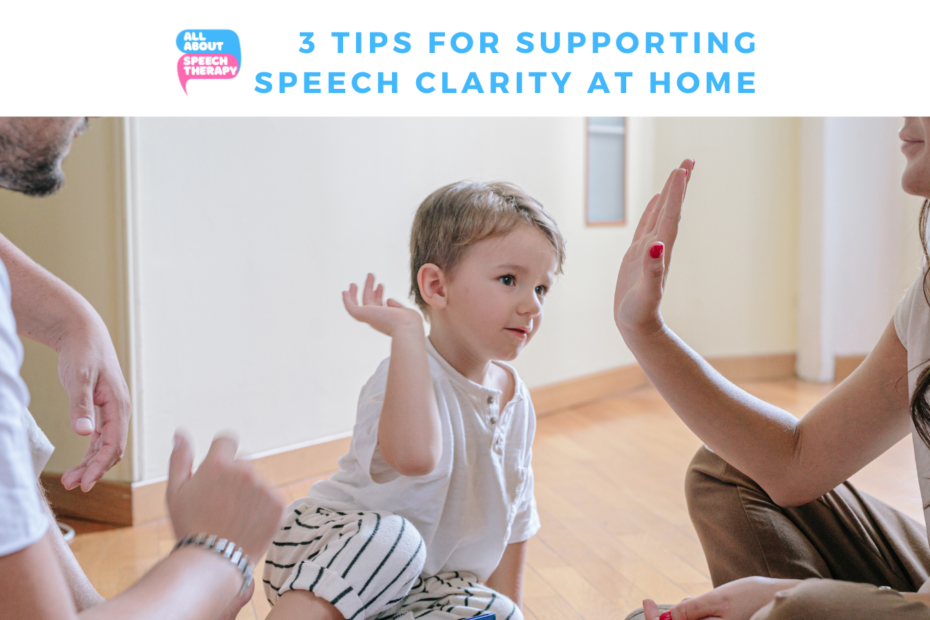The ability to speak clearly can have such a big impact on a young child’s life. When Alice first spoke to us, she was worried about Morgan because he had begun to talk but his words were really unclear. Often she found herself translating for others who struggled to understand what he was saying.
Morgan was not aware of his difficulties so confidently approached others to chat to them, but this was often met with bewildered faces who would either guess at what he was saying or just nod and smile.
Alice was looking for ways to help Morgan at home during his usual daily routine, rather than any formal sit-down activities. We chatted through some ideas and agreed on 3 techniques for them to try.
At first Alice needed to remind herself to implement them, but once she got used to the new ways of interacting with Morgan it got easier. In just a few weeks she was noticing the difference.
Tip 1 – Recast words clearly
The first thing Alice added into their routines was something she would do when she noticed Morgan saying an unclear word. After Morgan’s word attempt Alice would say the word again but more clearly.
For example, during dinner when Morgan asked for a ‘bork’ Alice replied, ‘fork’, here you go – a fork’, emphasising the initial sound.
Notice that Alice didn’t openly criticise Morgan’s speech, just subtly provided him with a clearer model. This is something that Alice frequently did during the day; not with every single word, but words that Morgan used frequently.
Tip 2 – Get face to face
The next technique was to stop and get face to face when talking to Morgan. By showing him how she used her mouth, he was able to gain extra clues about what to do with his lips and tongue.
Alice found that Morgan made more attempts at copying her during these face to face times. Alice could also try out some Cued Articulation so that Morgan could see extra information about how the sounds were produced. Morgan liked doing some of the cues and enjoyed practising them in the mirror too!
Tip 3 – Repeat, repeat, repeat
Repetition is one of the simplest yet effective techniques for many areas of learning, including speech clarity. This meant that Alice would not only repeat key words during routine activities, but she would also encourage Morgan to repeat words to help him say them more clearly.
For instance, if he said ‘bork’ and Alice recast ‘fork’ adding in the cued articulation sign for f, Morgan would then attempt the word 5 more times. Often by the final time the word was much clearer.
What Alice found really helpful was how she could use these techniques whenever it was convenient, rather than needing to set aside a structured time with a set list of words. Over time, Morgan’s clarity improved and so did his confidence.
For more at-home support, visit our Resources Library for free downloads, video tutorials, and more!
